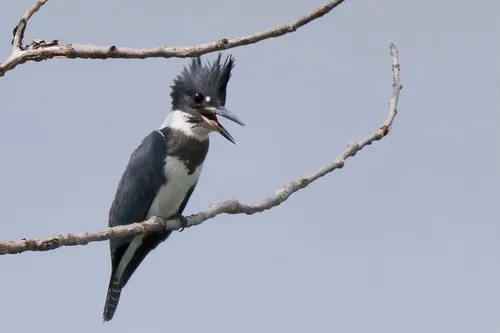Compiled by Jane Tillman for KXAN
What to watch for in January: Winter Warblers

Yellow-rumped Warbler in Winter Plumage COURTESY: Jeff Osborne
Since warblers are mainly insect eaters it may surprise you that Austin has several warbler species that migrate here just for the winter, when insect populations decline. The most common warbler we see is the abundant Yellow-rumped Warbler, with sightings expected from October through mid-May. Sightings of Pine Warblers are expected from November through March, while Orange-crowned are usually observed from October through early May. This year there are a few rare Black-throated Gray Warblers in town, which are unusual this far away from their expected range. They normally winter in Mexico and summer in the mountain west.
Let’s take a deeper look at the Yellow-rumped Warbler since they are easy to see.
Yellow-rumps are well named as they have bright yellow rumps year-round. At this time of year the birds are in drab winter plumage. They are brown on their heads, backs and wings, with brown streaking on whitish breasts and flanks and upper backs. Look for yellow patches on the sides of their breasts under the base of their wings (in their “armpits”). They have white in their outer tail feathers, easily seen in flight. You may notice their white or buffy wing bars too. White throats and small bills complete the picture of these 5-1/2 inch birds.

Bright Male Pine Warbler COURTESY: James Giroux
The reason Yellow-rumps can survive our winters and winters as far north as coastal Nova Scotia is that when insect fare is absent, they can switch to fruits, seeds and nuts. In the eastern part of their winter range they are unique among America’s wood warblers in being able to digest the waxy berries of wax myrtle and bayberry. In our area they eat fruits like juniper, sumac, viburnum, poison ivy, and Virginia creeper berries, grapes and seeds/nuts like pecan pieces and goldenrod seeds. Yellow-rumps are facultative migrants which means they move around during winter when food sources dwindle, often due to severe winter weather. Their flexibility in adapting to various foods and habitats explains their success. There are an estimated 170 million breeding Yellow-rumps in North America!

Orange-crowned Warbler Eating Scale Insects COURTESY: Jane Tillman
Where can you find a Yellow-rumped Warbler? Just about any park and wooded neighborhood will have one or more. Listen for a distinctive sharp chip call to direct your search. Yellow-rumped Warblers are active, and have a variety of foraging techniques which increase the chances you will see one. They glean insects from tree bark and leaves, perch to grab berries and fly out from perches to catch insects. They are flexible in their foraging locations, from high in trees to low in shrubs and ground level giving you several chances to see them.

Yellow-rumped Warbler Showing Its Rump COURTESY: James Giroux
Fun fact: There are two subspecies of Yellow-rumped Warbler in the U.S. The Myrtle subspecies has the widest geographical breeding range across the northeastern U.S. and all of Canada to Alaska, with a broad wintering range too. Myrtle is the common Yellow-rumped in Austin, and it used to be a separate species called the Myrtle Warbler, due to the birds’ fondness for wax myrtle. The striking Audubon’s subspecies, formerly Audubon’s Warbler, is restricted to the western U.S. and part of British Columbia. A few Audubon’s show up in Austin every winter and it’s always a treat to see the most striking yellow-throated subspecies. The two subspecies hybridize in a small area of British Columbia and Alberta, Canada which is why they are now lumped into one species.

Yellow-rumped Warbler With Sycamore Balls Which Have Edible Seeds COURTESY: Jeff Osborne

Yellow-rumped Warbler Foraging at Ground Level for Aphids COURTESY: Jane Tillman
What can you do to attract some of these winter warblers to your neighborhood? Orange-crowned, Pine and Yellow-rumped will come to suet cakes hung from a tree. Peanut butter spread on tree bark also might work. The best way to provide for them and other wild birds is to plant native plants that support the insects they eat, and burying plants for winter food. Get a list of plants that are native to Austin based on your zip code from the National Wildlife Federation’s Native Plant Finder.

The Audubon’s Subspecies of Yellow-rumped Warbler With Its Yellow Throat COURTESY: Jeff Osborne

Yellow-rumped Warbler at Suet COURTESY: Bill Sanford
Resources: All about Birds, Birds of the World, The Sibley Guide to Birds, The Crossley ID Guide Eastern Birds, The Warbler Guide, and the National Geographic Field Guide to the Birds of North America


